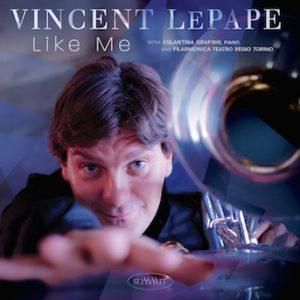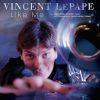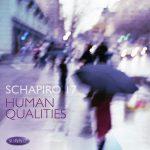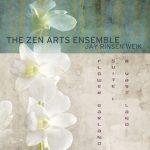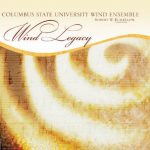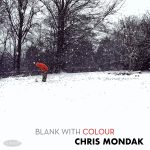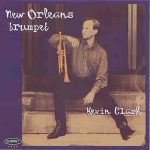Like Me – Vincent LePape
A journey through the many faces of the trombone
“From the calm and religious emphasis to the clamor wild orgy”, expressed by Hector Berlioz about the great potential of the trombone. Late medieval instrument, the trombone is use for the first time in Orfeo by Monteverdi that requires five different types. With the evolution of technology the trombone takes on features and quality sound different; early nineteenth century Beethoven appreciates the stamp and places it on the staff of the fifth, sixth and ninth symphony. It will be with the great composers of the full German Romanticism that this instrument will know the maximum attention: Brahms, Wagner, Strauss, Bruckner and Mahler wrote memorable steps for the instrument. The program on this CD allows you to find the possibilities and the character of this noble instrument, in a path from Romanticism to the present day.
Robert Schumann (1810-1856) embodies with his aesthetic, his character, and the events of his life, contrasting two souls, two souls struggling that, ultimately, are the quintessence of Romanticism. The ardor and melancholy, inherent in the human soul, in him shone with full colors that poured into his scores. In December 1849 he wrote three Romances for oboe and piano, here etched in transcription for trombone; “Fruchtbare das Jahr”, the fruitful year, says Schumann of that period so full of creativity. Featuring a dreamy lyricism, these three romances exposes the high melodic inspiration to which Schumann knew reach. The three pieces are, in fact, three lieder designed for solo instrument and piano which communicates, discusses, accompanies and completes the melodic line of the trombone. Rich and flexible instrument, the trombone revealed in these pages expressive nuances ranging from melancholy to torment, until you get to the final contemplation of the last romance.
Concert pour Trombone et orchestras of young David Sanson, it is here recorded premiered version for trombone and piano. The Concert is divided into three movements: Allegro – Cantilena – Presto, this concert draws an itinerary that, from sophisticated contrapuntal texture of the first movement, through moments of great lyricism in the second, to close with an extraordinary rhythmic vivacity of the last movement. Sanson, composer and trumpet player himself, transforms the secrets of phrasing and breath of wind instrument in a musical journey full of surprises. In this concert the trombone it is used in its melodic nature, tone and rhythm. Three aspects developed in three movements that provide a complete idea of the capabilities of this instrument. In the up and initial, trombone and piano weave their melodies in a refined game of contrapuntal proposals and responses, their lines create a plot in which exchanges and references suggest Bach. Cantilena emerges in color sweet and sometimes sad trombone, almost a soliloquy night, streaked with jazz. In the Presto we find almost the lesson of Bartók, the tension continues to stress here rhythmic cleverly built keeping in mind the characteristics, limitations and capabilities of a powerful instrument like the trombone, here engaged in daring and acrobatic wide intervals.
The Fantaisie for trombone and piano by Zygmunt Stojowski (1870-1946) is part of a trilogy of fantasies that the composer dedicated respectively to the viola, cello and trombone precisely. With Stojowski we dive into the roots of the late European Romanticism. Great Polish pianist and pupil of Paderewski, Stojowski studied composition in Paris with Delibes and then moved in 1905 to New York, the city where he spent the rest of his life. Conceived in one motion with a leitmotiv, play by trombone in his first entry, the piece is structured in a rondo form. This Fantaisie are several styles of the purest taste decadent themes and powerful themes, an oriental touch in the melodies, vigorous and massive harmonies entrusted to the piano and trombone outbursts elegiac seasoned with chromaticism worthy of Richard Strauss. A bravura piece that shines in the repertoire of the best trombonists.
Henry Tomasi (1901-1971) French composer and conductor, he has composed several concertos for solo instrument and orchestra, among them one for trombone, written in 1956. Divided into three movements: Andante et scherzo-Valse – Nocturne – Tambourin, has a strong French character, with some nuances impressionist. Tomasi, in his late musical language, creates an elegant concert, with catchy dance rhythms and evocations of folk melodies. In particular, the third movement is an explicit homage to the old French dances: the tambourin was in fact a popular dance in binary time, the character alive and bright, which has captured the interest of many composers, from Lully and Rameau to Berlioz and Grétry . Henry Tomasi, during the composition of this concert, it was the object of fierce attacks by the avant-garde music of the fifties, that while branding neo-classic and old-fashioned. At the official level instead it enjoyed a large support, so as to merit the Legion d’honneur that lifelong refused until it was opened the first conservatory in his native Corsica. In 2008 at Ile de Beaute, this wish has been fulfilled, albeit posthumously, and today the first Conservatory course is entitled, of course, to Henry Tomasi.
Caprice chamber op. 35 Bernhard Krol (1920-2013), recorded here in the original version for trombone and seven instruments with the instrumental group of the Philharmonic Teatro Regio Torino, is a dense page in the form of variations. Krol, famous horn player of the Berlin Philharmonic, was also a respected composer, formed in the wake of the school’s tonal Reger and Hindemith. Capriccio in this discourse unfolds seamlessly between one section and the other, like a wave that feeds on itself in melodic phrases and gestures in constant motion. It may, however, clearly distinguished from the net moments melodic than other harmonic. The opening theme is a combination of writing diatonic and chromatic, Krol uses this trick to present the bricks with which it will build all sections of Capriccio. Sort, moved, reassembled, size and magnifies these first notes from the trombone, to build an architecture musical dense and wide-ranging.
Leonard Bernstein (1918-1990) is presented at the end of the CD, with a little score, familiar to trombonists, but mostly unknown to the public. The famous conductor (and brilliant composer who still expect a full revaluation) wrote in 1948 a series of pieces to enrich the repertoire of the New York Philharmonic Brass Section. He wrote a series of short pieces inspired by and dedicated to dogs that cheered the life of Bernstein. Rondo for Lifey, for example, wrote to lifey, the cute terrier of his great friend Judy Halliday (Oscar winner for best actress in the film Born Yesterday, 1950). Mippy was instead the lovable dog of his brother, for which in fact he wrote three elegies, the second of which for solo trombone. The soloist must play this song chanting time with his foot. An anecdote has it that Bernstein, after the first run, was appalled by the inability of the soloist keep time, he rushed into the dressing room requiring the beat time with his foot for all future interpretations. And since there is no self-respecting trombonist does not follow the advice of the author.
Paolo Cascio



